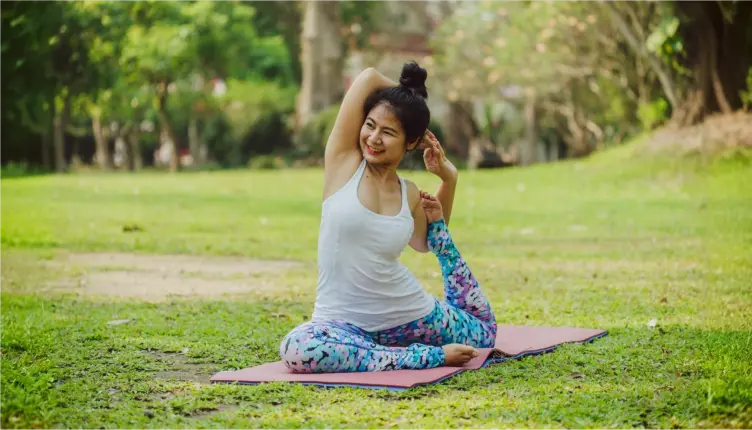
596
Exercise is a powerful tool for managing IBS, promoting overall gut health, reducing stress, and enhancing physical well-being. Incorporating the right workouts into your routine can help alleviate symptoms and improve your quality of life. In this article, we'll explore the best types of exercise for IBS and highlight how DailyBloomTM IBS customises exercise plans to suit your needs and capabilities.
Regular physical activity can significantly impact the management of IBS in several ways. Some of the benefits of regular exercise include:
Improving Digestive Health: Exercise helps stimulate the muscles of the intestines, promoting regular bowel movements and helping reduce symptoms of constipation.
Reducing Stress: Physical activity triggers the release of endorphins, the body's natural mood lifters, which help reduce stress and anxiety as one of the common triggers for IBS symptoms.
Enhancing Overall Wellbeing: Exercise contributes to better sleep, increased energy levels, and helps elevate mood, all of which are beneficial in managing IBS.
When selecting exercises to manage IBS, it's important to choose activities that are gentle on the body and help in reducing stress. Here are some of the best workouts for gut health:
It combines physical postures with breathing exercises and meditation, which help in reducing stress, promoting relaxation, and enhancing digestive health. Studies have shown that practising yoga systematically and regularly can help significantly reduce the severity and frequency of IBS symptoms.
Suggested Poses: Certain yoga poses, such as the Parighasana (Gate Pose), Ardha Matsyendrasana (Half-Seasted Spinal Twist), and Ananda Balasana (Happy Baby Pose), specifically target the digestive system, helping to relieve bloating, gas, and constipation. The asanas are suggested to be learned and performed under supervision before practising unsupervised.
It is a low-impact exercise that stimulates the digestive system, helps in regulating bowel movements, and reduces stress. It's easy to incorporate into daily routines and requires no special equipment.
Tips: Aim for at least 30 minutes of brisk walking most days of the week. This can be broken into shorter, manageable sessions throughout the day.
It is a cardiovascular exercise that promotes overall fitness and helps in reducing stress. It can be done outdoors or on a stationary bike, making it versatile and accessible.
Tips: Start with shorter rides and gradually increase the duration as your fitness level improves. Ensure you maintain a comfortable pace to avoid overexertion. It is always advised to begin the sessions under expert supervision.
Personalised Yoga Plans: Our care plan begins with a thorough assessment of your symptoms, fitness level, and personal preferences. Based on this information, our experts create a personalised yoga routine that targets your specific IBS symptoms and promotes overall gut health.
Adjusting Over Time: As you progress through the 14-week care plan, your yoga routine is adjusted to reflect improvements and any new challenges. This ensures that the practice remains effective and aligned with your evolving needs.
Expert Instruction: Our app provides access to videos of certified yoga instructors who guide you through each session with detailed instructions. This ensures that you perform each pose correctly and safely.
Integrating Mindfulness: Our yoga plans incorporate mindfulness and breathing exercises, which help in reducing stress and promoting relaxation. This holistic approach addresses both the physical and mental aspects of IBS management.
Tracking Progress: The app helps you track your progress, providing insights into how your symptoms are improving over time. This feedback helps in further personalising your yoga plan and enhancing its effectiveness.
